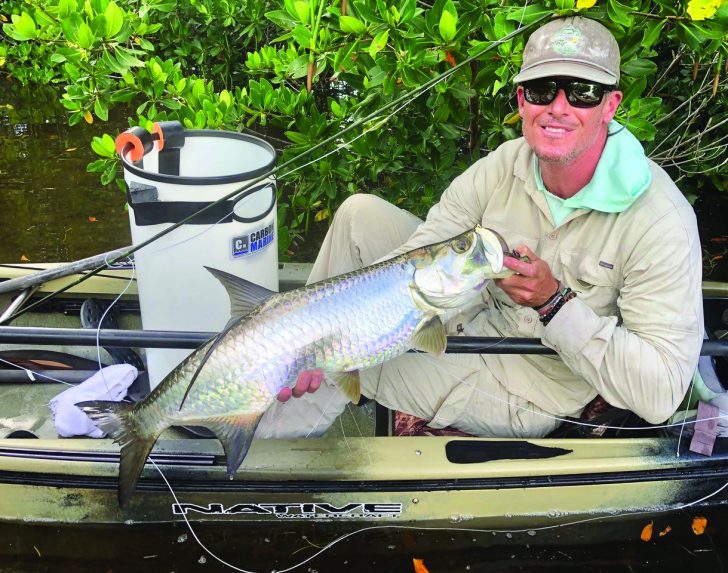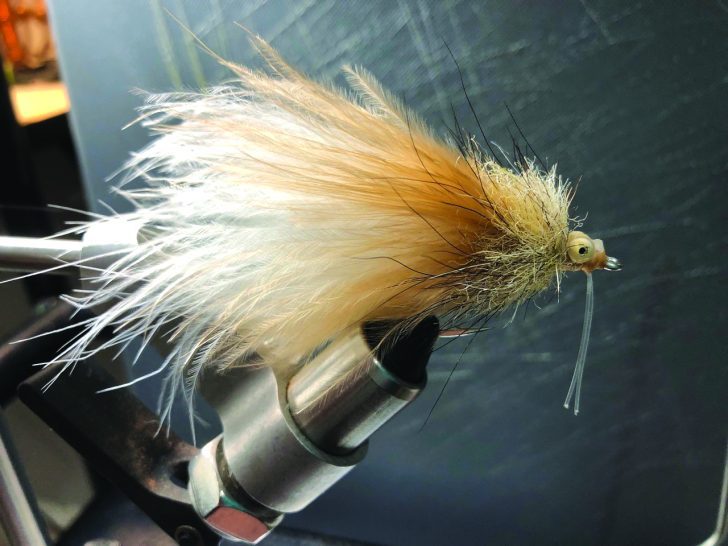
Fly fishing for juvenile tarpon from a kayak is terrific fun in the summer. Getting out early (first light) will increase your chances immensely and give you the best fishing before the scorching afternoon heat. My trips this time of year are usually done by noon. Tarpon have a habit of breaking the surface, known as “rolling”, often during early, low-light hours. This is great for us anglers since it gives away their position and direction enabling us to deliver an accurate cast. But then the question becomes, “What do I throw at them?”
Tarpon have a wide variety of food items, and respond well to many types of flies, but the tried and true performers would be flies that emulate shrimp, crabs or baitfish. Furthermore, there are fly patterns that don’t necessarily look like any of these three but seem to consistently work well.
Tarpon like to eat up, so most tarpon patterns have no added weight at all. The juveniles in the Keys are usually in 2 to 5 feet of water so you want a floating fly line. These two criteria will keep your fly high in the water column and get much more action than a fly dragging the bottom. Once in a while I may use a fly with bead chain eyes to get it down a little bit in stiff current, but never any more weight than that.

Hooks should be high-quality and razor sharp. Tarpon have extremely hard and bony mouths, so using cheap hooks will lose you a lot of fish. In the Keys, most guides are using Gamakatzu or Owner hooks exclusively for this reason, and it’s also a good idea to carry a small file in your tackle to touch up hooks on flies that have been fished before.
Oddly, one the most popular color combinations for tarpon flies are black and purple. I say oddly because I don’t know of any black or purple shrimp or baitfish in these waters. But the theory is that the dark colors give a sharper visual profile to the tarpon’s eyes. Regardless of how or why, there’s no question these colors work great, especially around sunrise and sunset. In bright sun, I many times feel I get better results with lighter, more natural colors like white, tan, and olive.
Leaders for juvenile tarpon are a fairly straight-ahead approach – 10 feet or so, all fluorocarbon, all the time with 30lb tippet. If you are fortunate enough to find fish over 30 pounds, you might consider 40lb tippet. Attach your fly with a loop knot (my favorite is the canoeman knot) and you’re in business.
My schedule is light during the summer so if you want to get out there and have some fun with tarpon from a kayak, ring, text or email and we will get after them!
— Randy Morrow, Kayak Fishing Guide | 305.923.4643
LowerKeysKayakFishing.com | Randy@LowerKeysKayakFishing.com
